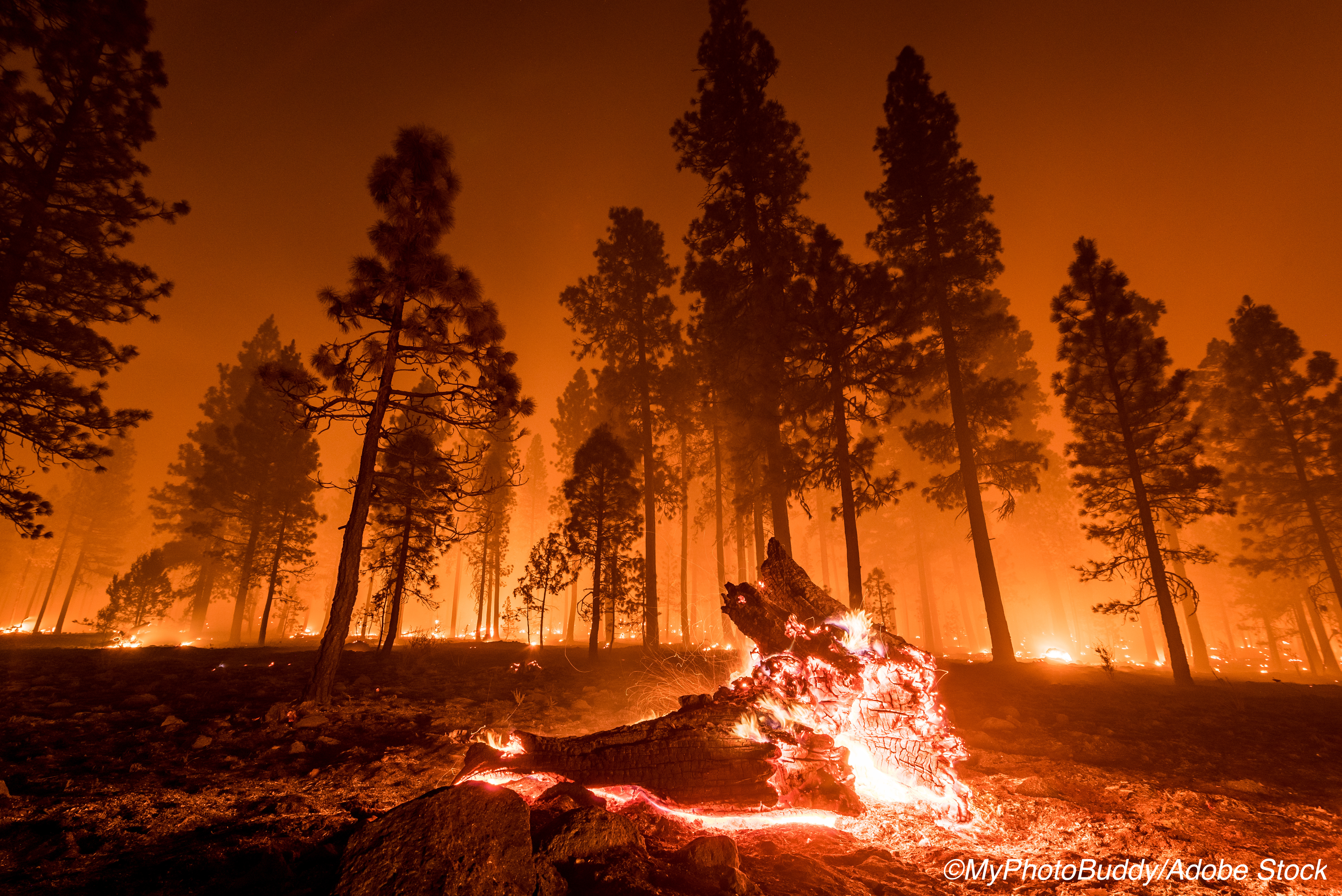
Massive forest fires that ravaged Australia through the last months of 2019 and into 2020, followed now by fires decimating much of the western United States, should serve as a call to action for healthcare professionals and lead the push for immediate action to limit global temperature increase, according to a special report published online by The New England Journal of Medicine.
“As a trusted source, health professionals are responsible for educating the public about the health risks of wildfires and risk-reduction strategies. They can also focus on reducing the carbon intensity of health care systems and advocate for lifestyles, actions, and policies with low environmental impact, such as the rapid transition to renewable energy,” wrote Rongbin Xu, M.B.,B.S, of School of Public Health and Preventive Medicine, Monash University in Melbourne, and co-authors from the Colorado School of Public Health, Yale University, the London School of Hygiene and Tropical Medicine, and the Center for Health and the Global Environment, at the University of Washington, in Seattle.
Among the health risks associated with wildfires are physical trauma and death, “heat-related illness ranging from dehydration-induced heat cramps to life-threatening heat stroke,” mental illness, including post-traumatic stress disorder, and damage from smoke, including corneal abrasions.
Pollutants associated with wildfires include “carbon monoxide, ozone, and particulate matter.” The authors noted that carbon monoxide spikes “are usually restricted to the areas that are directly affected by the fire, but ozone and particulate matter spread much farther. Wildfire smoke is an increasingly important source of ambient air pollution in the United States, where industrial emissions of air pollutants are declining. In the United States between 1997 and 2016, wildfires were a contributing factor on approximately 10% of the days that the surface ozone level exceeded the 8-hour standard (70 parts per billion).”
There is some evidence, the authors wrote, that particulate matter generated by wildfires may be more lethal than particulate matter found in urban settings.
“As compared with urban background particulate matter, which results mainly from the combustion of fossil fuels, wildfire particulate matter tends to have a smaller particle size and to contain more oxidative components (e.g., oxygenated polycyclic aromatic hydrocarbons and quinones) and proinflammatory components (e.g., aldehydes and oxides of nitrogen), features that potentially lead to stronger toxic effects. In addition, the high temperatures that often accompany wildfires and the oxidant gases from wildfires (ozone and nitrogen dioxide) can amplify the health risks of wildfire particulate matter,” they wrote.
From a health standpoint, exposure to this wildfire pollution increases risk of a wide range of respiratory events including exacerbations of asthma and chronic obstructive pulmonary disease, as well as respiratory infections. But the health-related damage from wildfires extends beyond the lungs to the heart as well, especially for older adults. “In a large study that analyzed 2.5 million hospitalizations for cardiovascular diseases among Medicare recipients (≥65 years of age) in the United States who were living within 200 km of large wildfires, increases in cardiovascular risk associated with wildfire particulate matter were similar to those associated with urban particulate matter,” they wrote.
Xu and colleagues caution that it is not enough for healthcare professionals to be aware of the health risks associated with wildfires — they must also be aware that current projections are that “the frequency of wildfires will substantially increase over 74% of the global land mass by the of this century. However, immediate climate change-mitigation steps are taken to limit the global mean temperature increase to 2.0° C or 1.5°C above the preindustrial level, then 60% or 80%, respectively of the increase in wildfire exposure could be avoided.”
That is the challenge for which Xu et al issued a clarion call in their “Special Report.” To achieve that slowing of global warming, nations—including the U.S.—would need to cut “global net anthropropenic carbon dioxide emissions from 2010 levels by approximately 45% by 2030 and reach ’net zero’ by 2050.”
In the U.S., achieving those goals would mean overcoming significant resistance from many sectors, including agriculture, manufacturing, and government.
Nonetheless, Xu and colleagues concluded that healthcare professionals must assume a leading role.
“Wildfires are associated with increased morbidity and mortality, but there are many gaps in knowledge regarding their health effects,” they wrote. “At the individual level, people can do little to reduce the adverse health consequences of exposure to wildfires. Societal action is requisite. Without immediate actions to limit the global temperature increase, the interplay between wildfires and climate change is likely to form a reinforcing feedback loop, making wildfires and their health consequences increasingly severe.”
-
In addition to destruction of property, wildfires carry significant long- and short-term health risks.
-
Be aware that current estimates are that wildfires are expected to increase in frequency and severity as global temperatures increase.
Peggy Peck, Editor-in-Chief, BreakingMED™
Supported by China Scholarship Council funds, the Australian National Health and Medical Research Council and Career Development Fellowship, and a Select Foundation Fellowship.
Xu had no disclosures.
Cat ID: 150
Topic ID: 88,150,914,192,150,151,925

